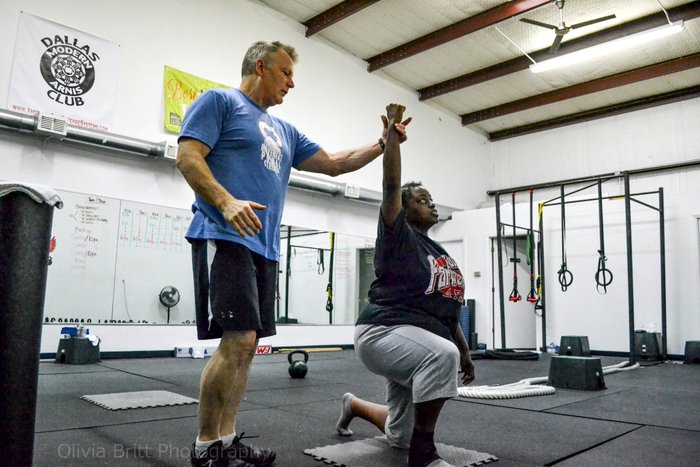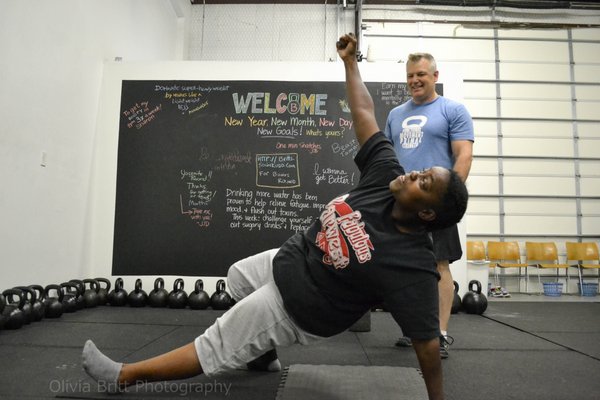
noun
Movement –
- The act or an instance of moving; a change in place or position.
- A particular manner of moving.
- A series of actions and events taking place over a period of time and working to foster a principle or policy
- A tendency or trend
- An organized effort by supporters of a common goal.
Movement is the back bone of athleticism and life. But, as a society we do not move the way that we did in youth. We are tied to desks, vehicles, and entertainment that requires us to just sit and become one with a chair. I started this post with the definition of movement as a beginning reference point.
The first two parts (a & b) of the definition are easy to cover and understand. We all move, and each of us has a particular way of moving. The question is, are we moving well? Most people seem to live in a position of flexion. We sleep, eat, drive and watch television from a bent and hunched position. We slouch and sag all day long. Guess what? Our bodies will take the path of least resistance and will stay in the posture that we live in. We were not created to just sit around; we were created to move, run, jump and play.
The third and fourth parts (c & d) of the definition describe what we need to change. We need to change our daily actions and events so that we restore the movement potential we were given at birth. It is time to get off the couch, up from the desk and actually start moving. We need to change our daily habits to allow our bodies to re-learn the movements and positions that we were born to do. Our kids are becoming slugs, thanks in part to videogames and constant visual entertainment. I have seen some kids play twelve hours of PS3, all while slouched and bent into weird positions. What happened to being outside all day, every day until the street lights came on?
The positions that we’re in all day do not help us live a full life. They prevent us from being able to run, play catch, or to live everyday life in the most efficient manner possible. We are held back by being bent and twisted in a life of sitting down. Sitting has been shown to increase the risk of death. Research has shown that sitting is associated with a higher risk of death after controlling for factors including age, gender, smoking status, physical activity, education, body mass index, and living in an urban/city environment.
I know that everyone wants to be active with their friends and family, and stay pain free and mobile into old age. I know I do! I want to be a pain in the rear of my family as long as possible! I think the best way to do this is to be 90 and move so well that no one can catch me!
We should move as much as we possibly can. Better movement allows us to have fewer injuries, live longer and have more productive lives. It is the cornerstone for our overall health.
How Do We Improve Movement Quality?
I teach the get-up as an antidote to improper movement and posture. The get-up is one of the best ways to battle the less-than-ideal positions our bodies grow into from our daily life of texting, sitting, and while working at most jobs. I find that while the get-up works wonders as a transformational exercise, many clients have a hard time learning it. Some even need to earn the right to perform it.
I teach the steps a little different than most trainers. I like to teach the get-up from the bottom to the middle, and from the top to bottom. This approach seems to work really well for grooving the correct patterns into the neurological system.

I start from the Pick Up to the Tall Sit position. In the first step, roll from your side to prone. This strengthens a primal rolling pattern. Rolling patterns are great tools for teaching the body how to engage the core and stabilize the body under load. Why is this important? It allows the body to develop its innate stability and to connect the lower body to the upper body for more strength.
The next step is the Tall Sit. It allows you to work on shoulder mobility and stability. It will reinforce the connection the core has with the upper body. This is often the step that most of my clients need if their mobility is compromised. I kept one client at this stage for nine months while we worked on improving his thoracic mobility and core strength. During that time, the heaviest weight he used for the training was 4kgs. If we had forced the issue, he would have been injured. He was 60 when he began, and last I checked, he was using a 20kg kettlebell for full get-ups at age 63.
I teach the Hip Lift only as part three of the movement. I find that the movement becomes a little harder for my clients to perform after that point. They cannot initially get the idea of the moving from the low sweep to half kneeling or they do not have the proprioception to make the transition.
The next step that is taught is from standing down to half-kneeling. This allows the student to develop leg strength and improve their stability. It has been my experience that many clients lack stability in the lunge position. By working from standing to half kneeling, then moving through the reverse lunge under control, you can train stability while detecting any asymmetries the student may have. This lets us correct the asymmetry before continuing and possibly causing an injury.

Once the student has practiced the get up from the floor to low hip lift, and standing to half kneeling, it is time to teach the entire get up. I start from the top and have the student work from the standing position to the half kneeling position. We add the low sweep to the tall sit at this time. They finish the get up to the prone position. Then, they stand back up (not doing a get-up, they simply return to a standing position) and repeat the sequence a few times on each side. The student will perform the get up from standing to prone before reversing the process and performing the get up from the pick up to standing.
I have found that this approach has helped my students learn the get up much faster. By working on these pieces as needed, their mobility and stability has improved even on their first day. This sequencing seems to be less threatening and neurologically taxing for my students, which also allows them to learn it faster.
If you look back at the definition of movement at the beginning, the get up fits it to a “T.”